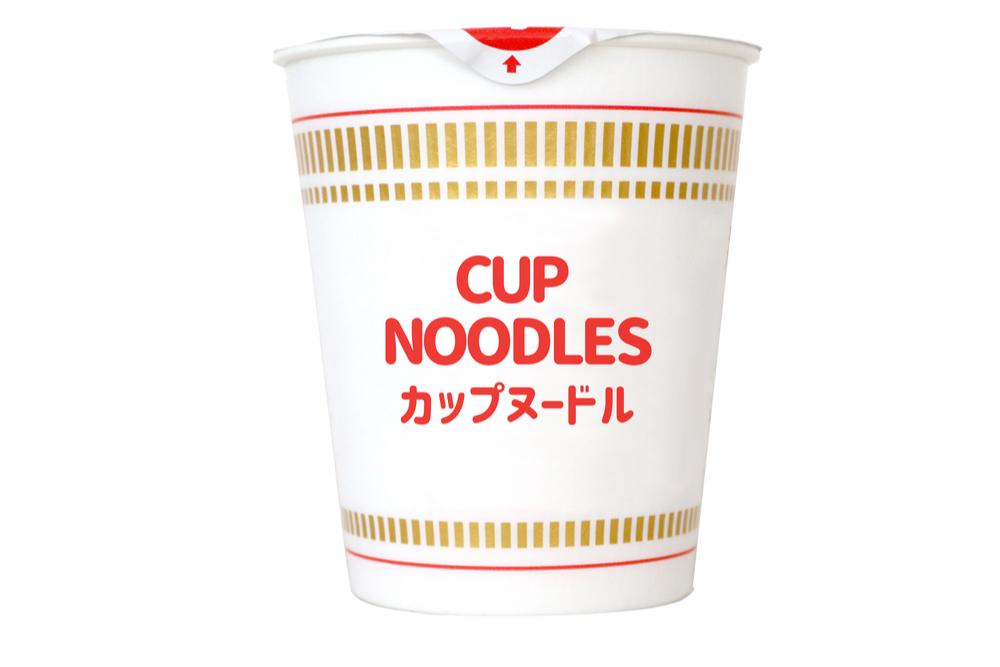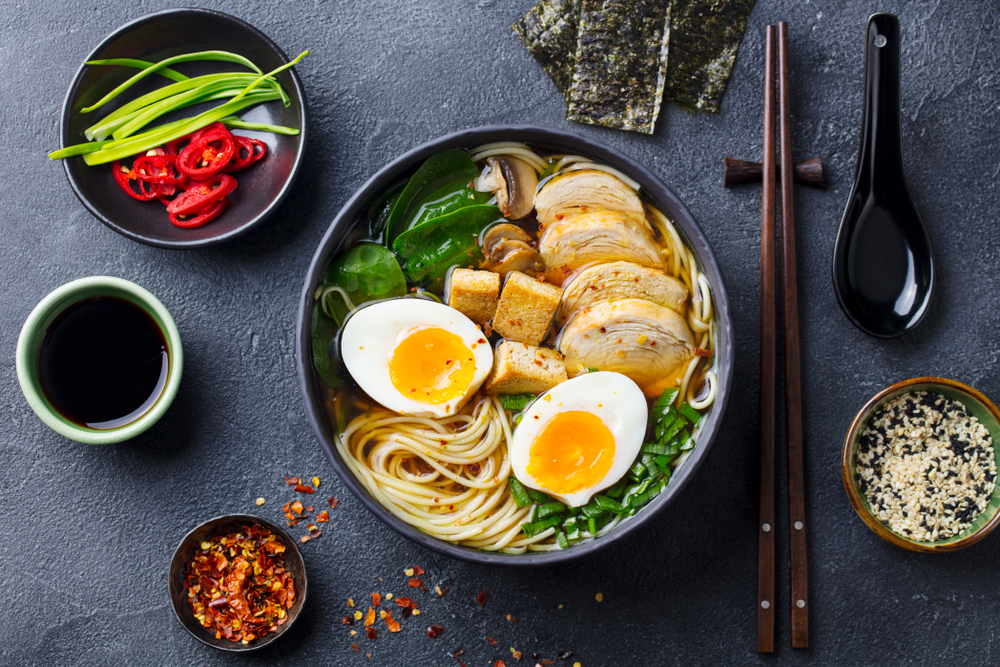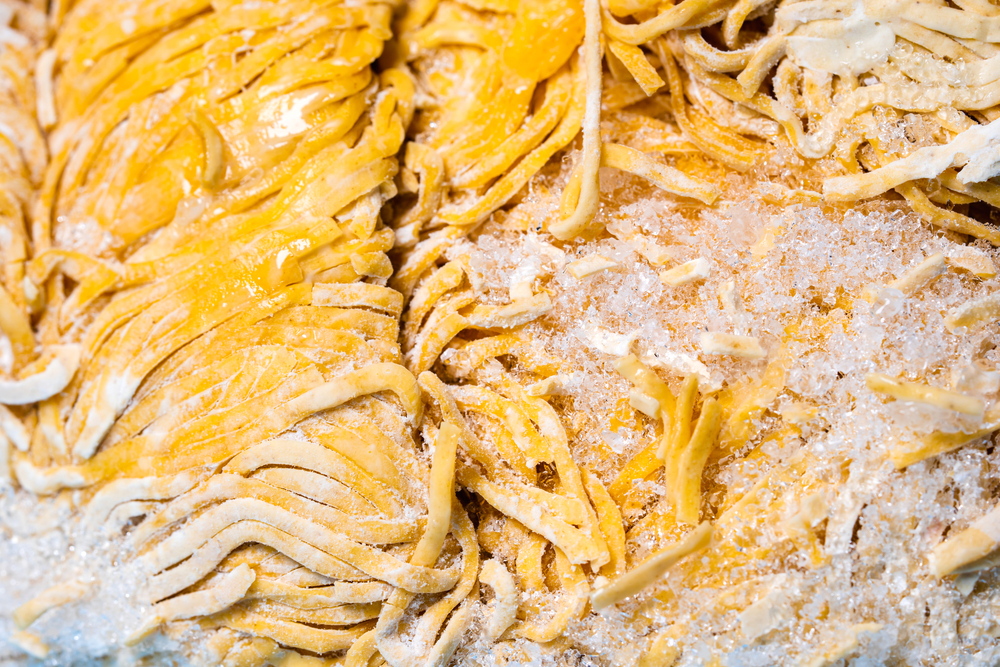In China and Japan, ramen is a staple food almost as predominant as rice. It is sold in convenience stores much like hot dogs in the US. It’s fast, convenient, and inexpensive.
In the US, ramen noodles or cup noodles are a quick and cheap meal. A package of them costing less than one dollar, they stock the pantries of single people and families on a budget across the country.

Cup Noodles are Extremely Popular in the United States
As inexpensive as they are, not much thought goes to them as leftovers. But if you did not finish your meal of ramen noodles, would it be okay to reheat them? Would they still have a decent flavor? Would they make you sick?
The Story of Instant Ramen Noodles
The key to eating leftover ramen noodles is the way you store them. If you are eating out of a bowl and just put it in the refrigerator, those noodles will dry out and become a sponge by the time you eat them.
Sealing them in an airtight storage container is the way to go. If you have more broth, you could add some to keep it from drying out. Do not add too much because they soak up the moisture and may become soggy.
The most important part is to keep it in the refrigerator. Ramen noodles have to stay cold after they are cooked. That keeps them from growing bacteria that can make you sick.
If you put your cooked ramen noodles in a storage container and place them in the refrigerator, they should last up to three days. Even in an airtight container, any amount of time beyond that will risk bacteria that could make you sick.
When you take the ramen out of the refrigerator to prepare it, check that it has not gone bad. If it has, the first thing you will notice will be a rancid smell. There may be some discoloration to the noodles, or it may even have begun to grow mold. If you see any of those things, throw them out and eat something else.
There are a couple of different ways to reheat ramen noodles. You can microwave ramen noodle or heat them on the stove. There are tricks to doing both that may help add some life to your leftover meal.
The microwave is the quickest way to reheat anything. What it makes up for in time may come out in flavor. When reheating in the microwave, there are things you can do to make it remain appetizing.
Using a fork, separate the noodles. They tend to stick together when they are not fresh. Also, add a little of the ramen broth you saved it. Or you can add a little butter to the noodles. As it cooks, it will melt the butter, making your noodles come out creamy.
The best way to reheat instant noodles is on your stove. It will seal in the most flavor and make it taste the most like it did when it was fresh. Again, separate the noodles before you start so they will not cook in one big clump.
If you stored your noodles and broth separately, you should now add the broth to a pot and bring it to a boil. Once the broth is hot, add your noodles. You do not have to cook them for long because they will get soggy. Add in a little butter as before to make your noodles come out creamy.
Reheating leftover ramen is a good way to battle food waste. Eating leftovers is always a good idea for people on a budget. But sometimes there is not enough ramen left to make a meal, especially if more than one person is eating.
If you have leftover broth, heat it on the stove until it comes to a boil. Add in fresh ramen noodles and any vegetables or meat you want to include to the boiling water. Once the noodles have reheated, remove the pot from the heat and throw in your leftover ramen. Use a fork to pull the noodles apart.
Stir it all together well until the cold ramen becomes the same temperature as the fresh noodles. You have a great way to expand your food budget and use your leftovers to supplement a new meal.
Heating ramen is probably not going to be enough. Ramen is good, but anything leftover and reheated later has to have things added to give it flavor. If you want plain ramen, you could open a new pack and start from scratch.

Add Flavor to Your Noodles with Additional Proteins and Vegetables
If you are trying to make a dish with your leftover ramen, do not be afraid to use your imagination. The great thing about instant ramen is that they are a springboard to many flavors.
If you have some cooked ramen in the refrigerator that you do not want to waste, but you know it is not going to be eaten in two days, then you may want to freeze it. There is no reason that you cannot freeze ramen noodles that are already cooked as long as it is done properly. Place the noodles in a storage container, and be sure to get the air out of it to protect them from freezer burn. They can also be placed in plastic zipper storage bags and may be easier to reheat that way.

When Freezing Your Noodles, Avoid Freezer Burn (shown above) by Vacuum Sealing Your Noodles in a Plastic Bag or Airtight Container
This is also an excellent meal-planning idea for people on a budget or pressed for time. You could make a large ramen stir-fry dish and divide it into portions for the freezer. You can pull the containers out and reheat them as needed throughout the week.
Frozen ramen noodles are similar to those out of the fridge in that they can be reheated in the microwave or on the stovetop.
To heat them in the microwave, take the lid off and put them in for five to seven minutes. They may not have the same texture as when they were fresh, but they will still be good.
Heating them on the stove is the best way to keep the flavor. Let the ramen sit on your counter for a few minutes. Turn your stove on medium heat. Pour the ramen into the pot and slowly stir for about fifteen minutes.
If you stored your ramen in plastic bags, you can bring a pot of water to a boil and put them in. The heat from the water will thaw the noodles without letting them soaking it up and becoming mushy.
Ramen noodles are among the most cost-efficient and culinarily diverse foods there are. The wonderful thing about them is how they can be added to so many dishes and make them better. And the way they can expand your pantry without breaking your wallet is good as well.
